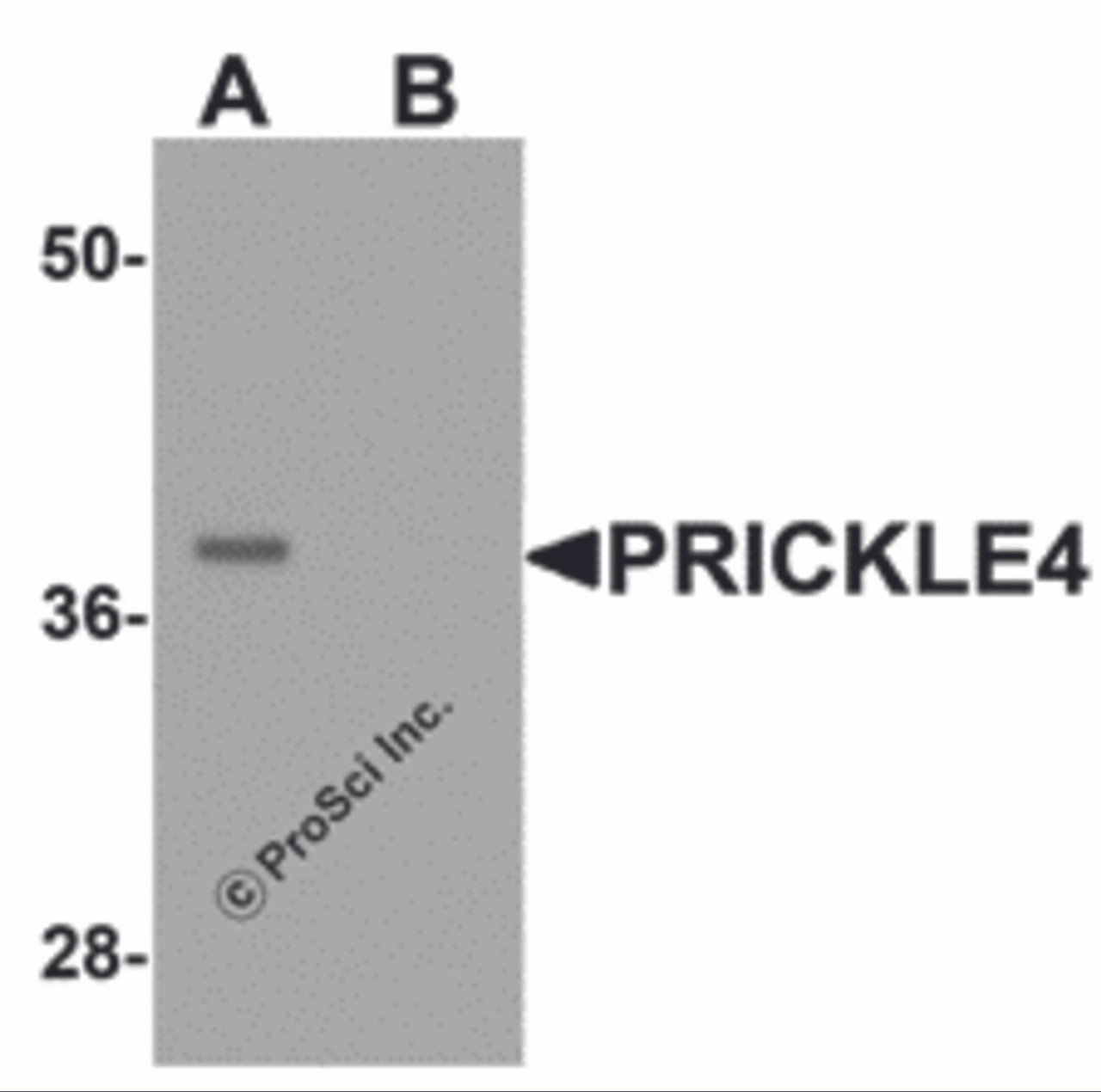Product Description
PRICKLE4 Antibody | 6567 | ProSci
Host: Rabbit
Reactivity: Human
Homology: N/A
Immunogen: PRICKLE4 antibody was raised against an 18 amino acid synthetic peptide near the amino terminus of human PRICKLE4.
The immunogen is located within the first 50 amino acids of PRICKLE4.
Research Area: Cancer, Cell Cycle
Tested Application: E, WB, ICC, IF
Application: PRICKLE4 antibody can be used for detection of PRICKLE4 by Western blot at 0.25 μg/mL. Antibody can also be used for immunocytochemistry starting at 5 μg/mL. For immunofluorescence start at 5 μg/mL.
Antibody validated: Western Blot in human samples; Immunocytochemistry in human samples and Immunofluorescence in human samples. All other applications and species not yet tested.
Specificiy: Two isoforms of PRICKLE4 are known to exist. PRICKLE4 antibody is predicted to not cross-react with other PRICKLE protein family members.
Positive Control 1: Cat. No. 1203 - A549 Cell Lysate
Positive Control 2: Cat. No. 17-003 - A549 Cell Slide
Positive Control 3: N/A
Positive Control 4: N/A
Positive Control 5: N/A
Positive Control 6: N/A
Molecular Weight: N/A
Validation: N/A
Isoform: N/A
Purification: PRICKLE4 Antibody is affinity chromatography purified via peptide column.
Clonality: Polyclonal
Clone: N/A
Isotype: IgG
Conjugate: Unconjugated
Physical State: Liquid
Buffer: PRICKLE4 Antibody is supplied in PBS containing 0.02% sodium azide.
Concentration: 1 mg/mL
Storage Condition: PRICKLE4 antibody can be stored at 4˚C for three months and -20˚C, stable for up to one year. As with all antibodies care should be taken to avoid repeated freeze thaw cycles. Antibodies should not be exposed to prolonged high temperatures.
Alternate Name: PRICKLE4 Antibody: OBTP, OEBT, TOMM6, C6orf49, Prickle-like protein 4, Overexpressed breast tumor protein
User Note: Optimal dilutions for each application to be determined by the researcher.
BACKGROUND: PRICKLE4 Antibody: PRICKLE4, also known as over-expressed breast tumor protein (OBTP) , is a member of the LIM family of proteins. It possesses two LIM domains as well as a PET domain and is thought to localize to the nucleus. Its expression in multiple malignant tissue differentiations indicate that it may play a role in cancer differentiation. Two other members of the LIM family, PRICKLE1 and PRICKLE2, are thought to function in the noncanonical WNT signaling pathway which regulates intracellular calcium release and planar cell polarity, suggesting the PRICKLE4 may play a similar role.
 Euro
Euro
 USD
USD
 British Pound
British Pound
 NULL
NULL












